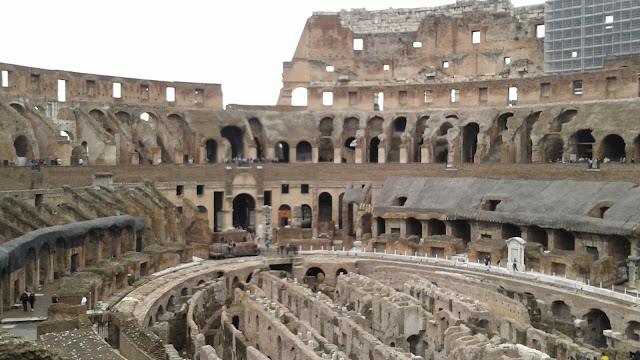 |
| Talaria's galley (kitchen) |
What do you do all day? Well a lot of things actually. When we set out on this journey our goal was to "see as much of the world as we could". We had grown tired of the "ordinary life". For us life had become mundane and boring. The monotony of the daily cycle: get up, go to work, come home, eat dinner, read awhile, go to bed and next day repeat had lost its appeal. Fortunately for us there were a series of unexpected "life events" that made us reconsider and ultimately decide to live differently. We always knew we wanted to buy a boat and go sailing when we retired so we just moved up the timeline!
 |
| Talaria's Salon (living room) |
Before I get into what we do with our time. I will clear up some misconceptions about our "living space". Yes, we live on a boat so we take our home with us wherever we go. We typically describe her as a "small NYC apartment". We have two berths (bedrooms), a head (bathroom) with a separate shower and a galley (kitchen) that has two refrigerators, two small freezers and a three burner stove with an oven. Our "floating home" has air conditioning and a propane furnace that we refer to as our "fireplace". We use solar and wind for power when not connected to shore power. And we can make our own water as we have a "water maker" which is essentially a small desalinator. We have 6 feet 4 inches of headroom so we don't have to scrunch down when inside. People often wonder how we can stand to live in such a small space. The difference is that we live most of our lives outside, so its not small at all. We are almost always outside or at least have the hatch open so we don't feel cooped up.
 |
| Sunset in Turkey |
Unless obscured by a mountain we typically see the sunset every day. If you have never spent the entire day - all 24 hours outside you should try it. Its amazing - to see the sun rise and set all in the same day. The first time I realized I had been outside for the entire 24 hours my thought was - "I have never witnessed the entire day outside before, not once my entire life!". The connection you feel with nature grows stronger and becomes more real as you become more aware of the forces of nature around you.
 |
| Sunset in Turkey |
So what do we do? Well... ordinary things like laundry, grocery shopping, boat cleaning and maintenance. We do not have a washer and dryer so laundry takes a bit more time as we have to use the marina laundry or find a laundry in some town. Grocery shopping has to be done every couple of days as we do not have a car. We typically walk to the grocery and then load the food in our backpacks and walk back. Occasionally, we eat out at a restaurant but usually we cook.
 |
| Varnishing |
There is always some maintenance to do such as varnishing the brightwork and painting the bottom. We try to do that work on the off season if we can. During "sailing season" we like to be sailing. There is a fair amount of time spent on trip planning and weather watching. For the most part we try to plan short hops up or down the coast.
 |
| Our friend Bill - on passage from the Azores to mainland Portugal |
But, of course, a long passage requires a bit more planning. For example, our trip from the Azores to mainland Portugal (a week long trip) required considerably more planning.

| |
 |
| Hiking in Turkey with friends |
Sailors are a unique breed - we tend to see ourselves as citizens of the world and in that regard we see the whole world as our playground. We meet and make friends with folks from all over the world. The conversation typically revolves around sailing - naturally. But we also learn about each other and each others countries. The people we meet tend to just seamlessly adapt to another culture- they appreciate, respect and celebrate cultural differences.
 | ||
| Dinner with new friends in Turkey | |
Our life is a very social life and a very active life. It is never boring and often challenging. But in our view all the challenges and occasional discomfort are worth it. Neither of us would be happy with a life filled with TV and mass consumerism.
 |
| Sailing with friends in Turkey |
We love the water, love being outside and love to sail. For the first time in our lives we feel unencumbered. There is nothing to tie us down and we feel free. So... that is what we do. We sail, explore countries, socialize with other sailors, plan future trips, maintain Talaria, read a lot and do ordinary life things. We study languages and history. And we experience new foods and cultures.
 |
| Shrimp for dinner |
 |
| Mel on watch |
Its a great life and one we hope to enjoy for some time to come. Is it always perfect? Nope! There are sleepless nights, stressful nights and things that break. Sometimes there are really big things that break. Our resilience is tested over and over... but those challenges keep us strong. So through it all we are both grateful and happy.







